
This Stunning Tahoe Retreat Is Built Around an Unexpected Outdoor Feature
This ultimate rustic retreat is sited around a concealed courtyard—and an epic fire pit under the stars.
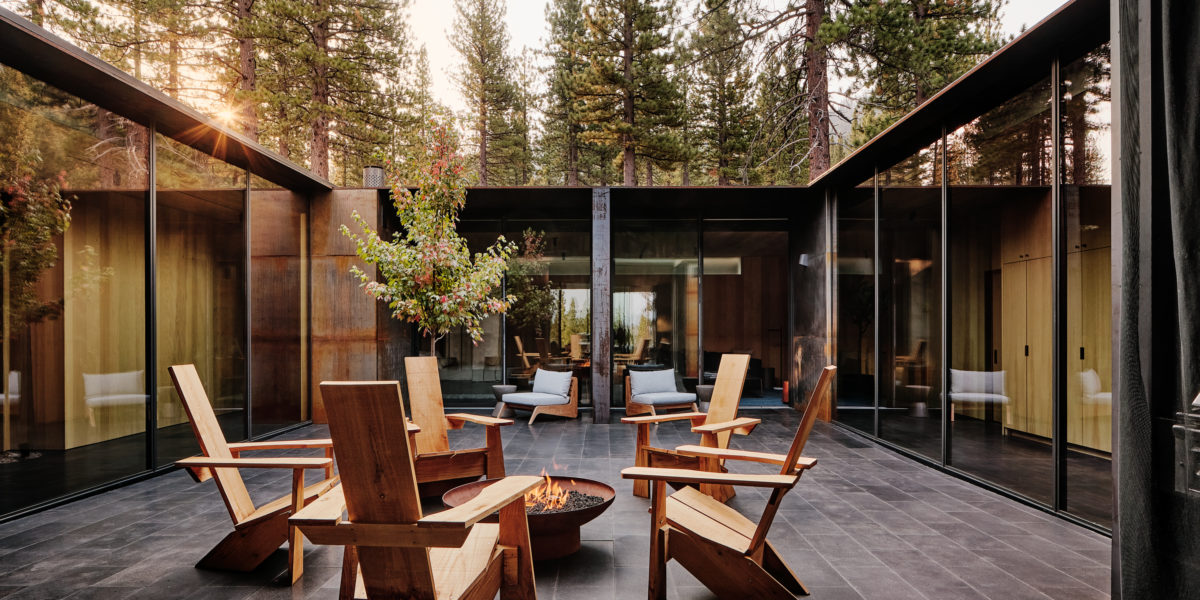
Greg Faulkner set out to build a modern Lake Tahoe home that felt like a campsite.
A guest house sat alone on this piece of property at the base of Lookout Mountain, where the client skied virtually everyday for exercise. When Faulkner heard about that daily activity—and the homeowner’s DIY Jeep hobby that enabled overnight adventures deep into the wilderness, even in the dead of winter—it changed the way he thought about the site.
This wasn’t a Tahoe weekend retreat to drive to, to sit in, to remark at how beautiful it was. This needed to be a base camp that the client could engage in—a well-designed tool.
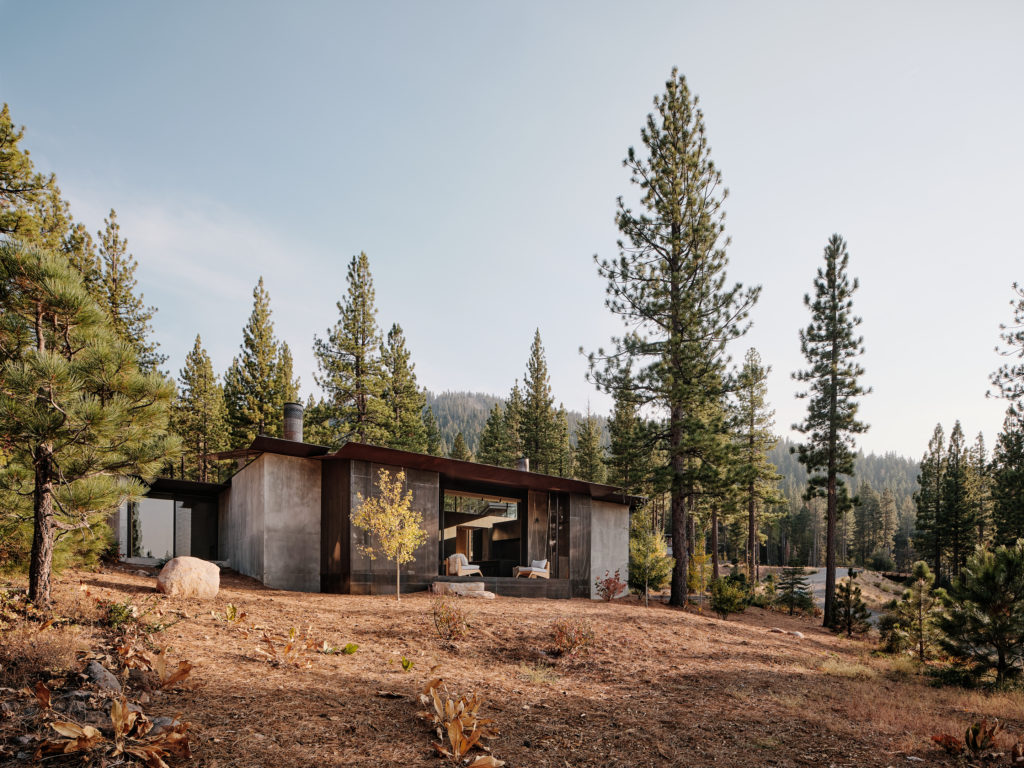
Joe Fletcher
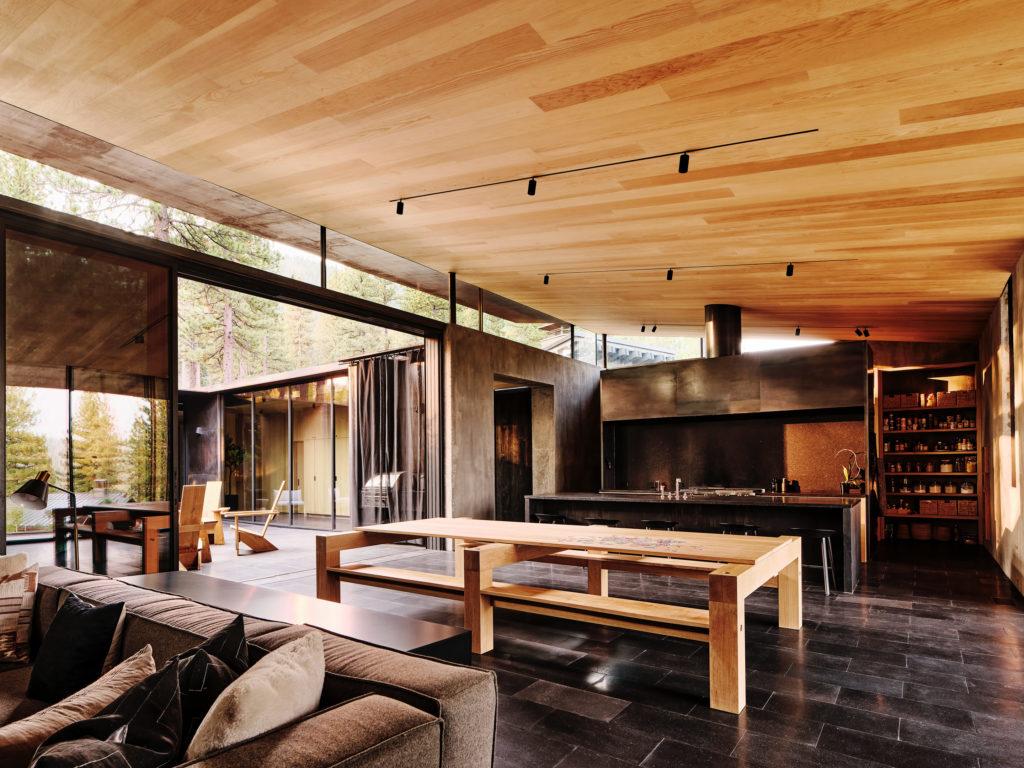
Joe Fletcher
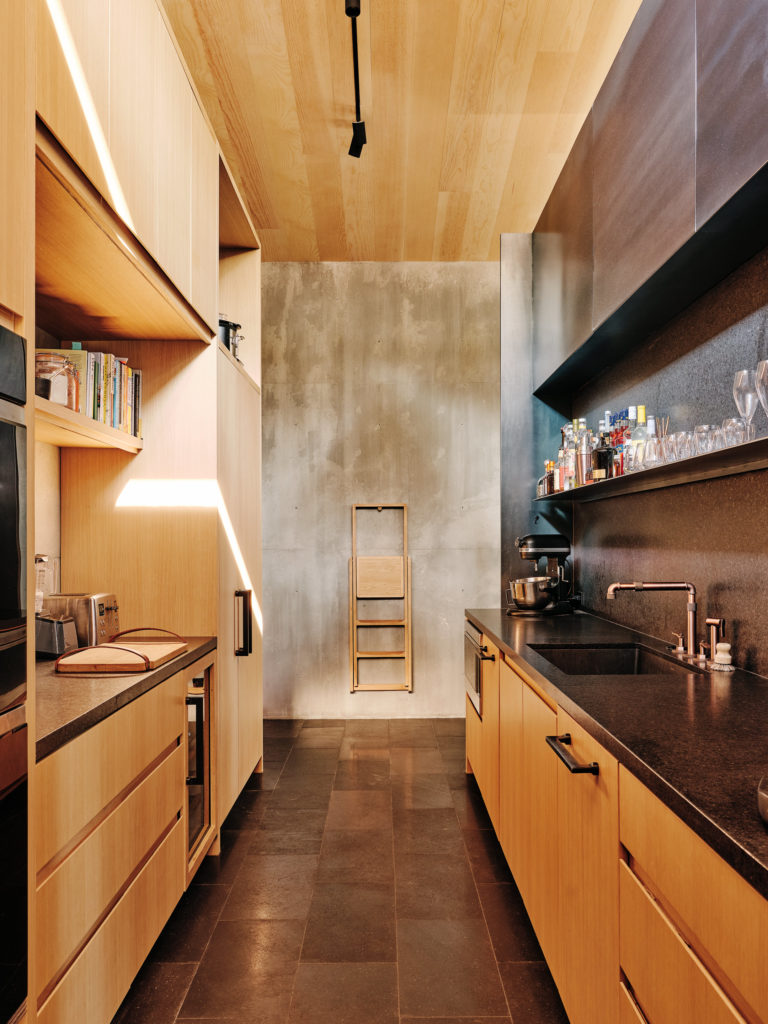
Joe Fletcher
The resulting CAMPout House completely avoids additive elements that would be only for visual effect. Its beauty lies in its intuitive function. The guest house bedrooms became a wall for a new main house, dug deep into the site and lit from above with skylights. A symmetrical, razor-thin steel roof matches the surrounding pine needles and feels like canvas, propped up just like a lean-to tent to capture the light. The low slope of the bedroom portion is only three feet above the grade at its closest point.
It surrounds a concealed, open-air courtyard with a firepit—like you’ve just arrived at the perfect bonfire raging at a campsite. Under the stars, it draws everyone to its flames and flickers through steel windows onto sugar pine walls and black basalt floors. The glass is sweeping and continuous throughout the courtyard. Exterior windows are smaller but strategically positioned to give the family snapshot views of the surrounding trees.
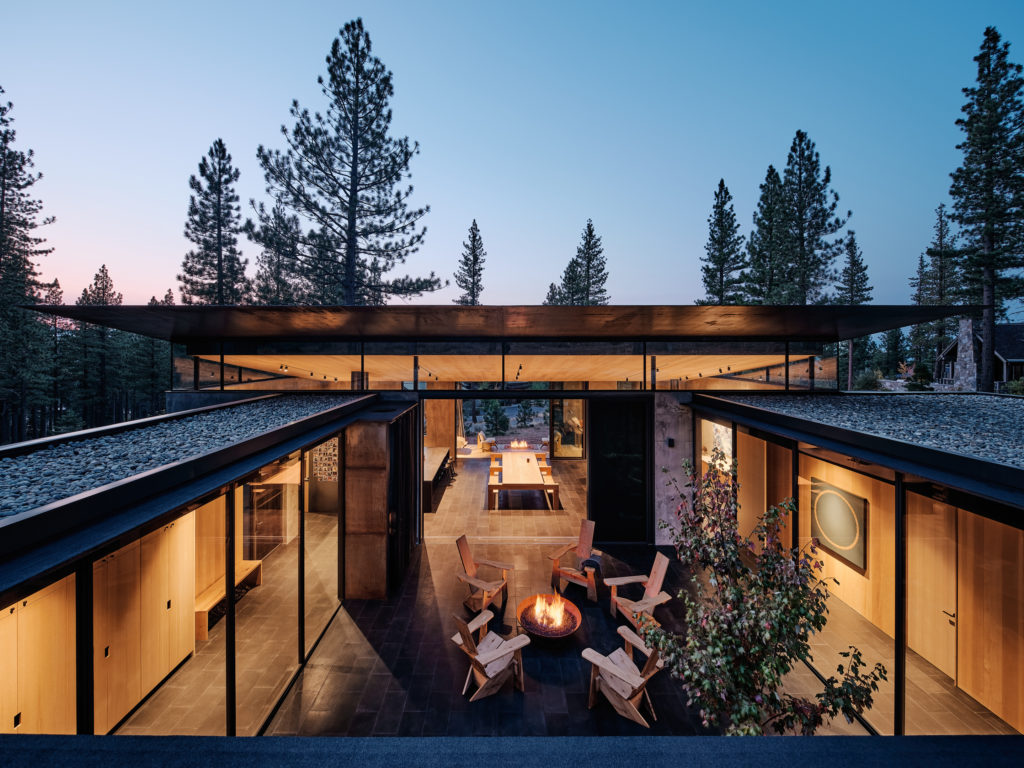
Joe Fletcher
Open the front door and you’re greeted by what’s heralded as a Donald Judd-esque interior by studio NICOLEHOLLIS—the dining area features a picnic-like table with benches for that backcountry feel. There’s a deliberate lack of decorative light fixtures. And all the appliances are hidden in the back pantry while the barbecue is screened off behind the courtyard to keep the raw, rustic vibe.
The space is beautiful because it’s reductive; everything is there for a reason. The Faulkner Architects team wanted to distill the materials down to singular choices for each design element; the quiet palette creates a calming presence throughout.
“It is a repetition in behavior of the natural world, like a grove of pines, redwoods, oaks, or aspen,” Faulkner says. “They have taken over their piece of land due to favorable conditions. They just feel right—aspens near water, redwoods on the Pacific coast, oaks and pines on the dry hills depending on altitude. They come from their place and evolve to be the climax species becoming a singular growth form.
“We all know the delight of experiencing these natural places. Intuitively, we as humans recognize the similarity in minimized pattern and palette that is informed by the natural materials of the site. The overall effect is one of association with the place that allows us to sense the conditions that drew us here.”
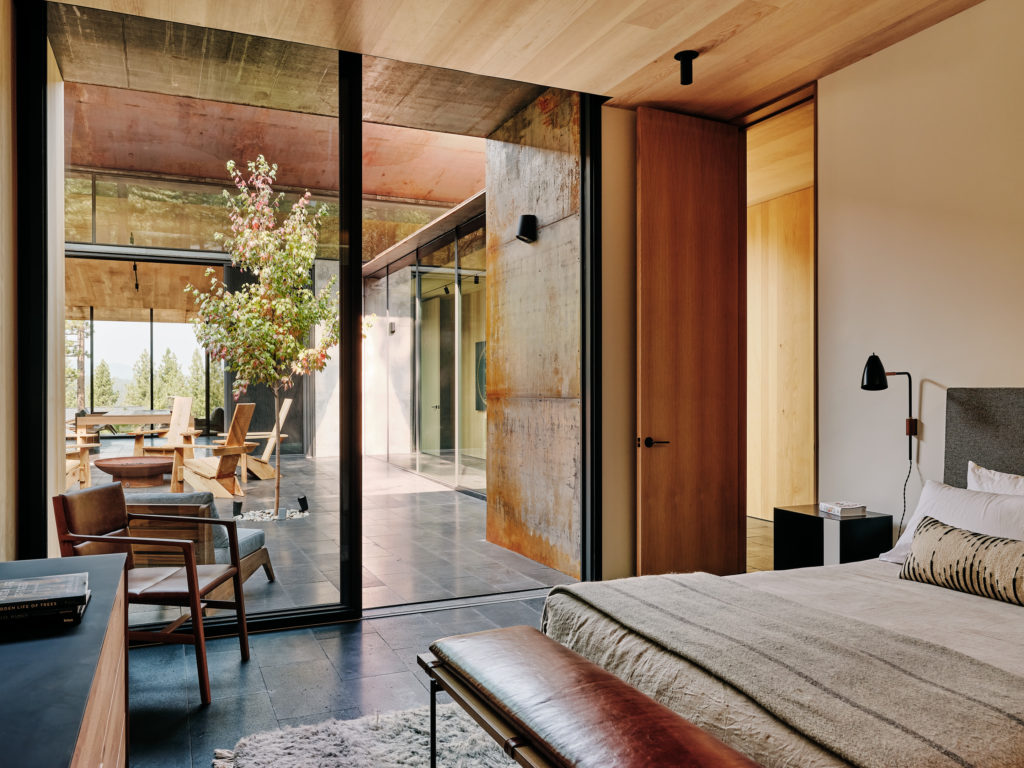
Joe Fletcher
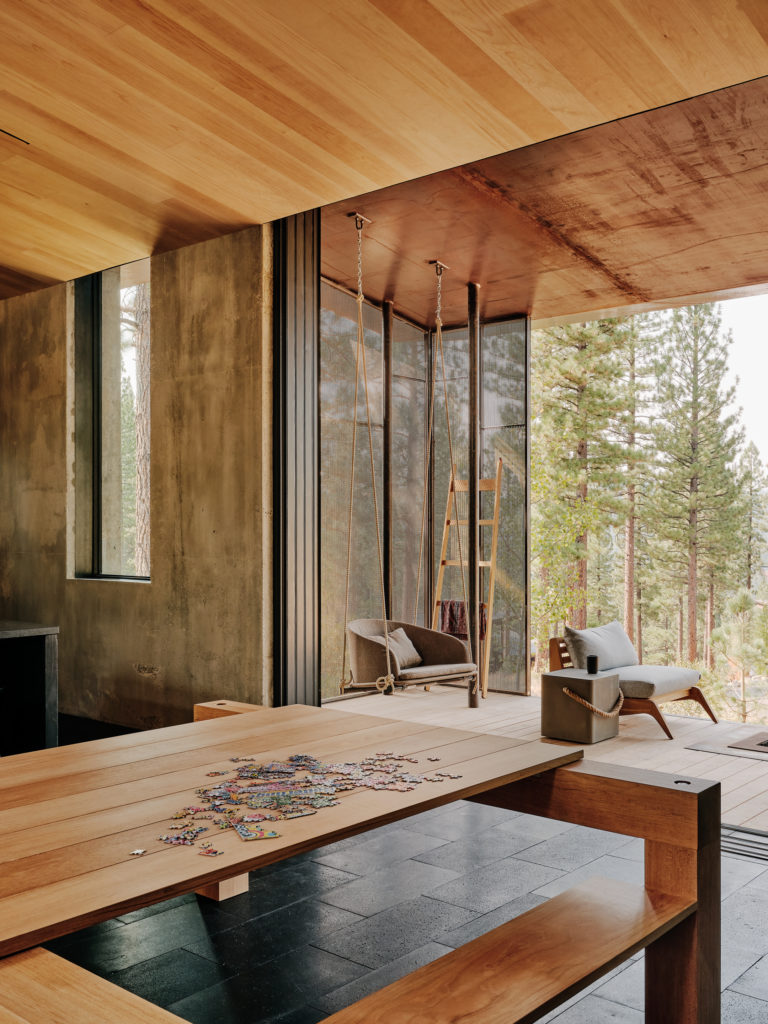
Joe Fletcher
The home is meant to be both low-maintenance and fire-resistant. Instead of the typical wood-clad cabins often seen throughout the region, Faulkner’s team opted for double-insulated concrete walls with limited exterior glazing to conserve heat energy inside. Windows are tempered glass and protected by a perforated mesh on the back porch. Inside, the team only used dry, unfinished wood to keep it in its natural state—they wanted to smell and feel the authentic beauty of that raw wood.
Ultimately, the house not only fits into but intensifies the landscape, growing up out of the mountainside slope. The team worked hard to bring the glazing right up to the underside of the roof planes, so that the actual thickness remains inside the clerestories. How the building meets the sky is “important,” Faulkner says. “Thin lines transition and connect to the space and landscape with less friction.”
While small, these expensive details are what add to the elegance, eliminating clunkiness and aiding the home’s delicate, wild dance with the forest. The Faulkner team didn’t want it to contrast with its sense of place.
“Its place is beautiful,” Faulkner explains. “We want to change that as little as possible.”
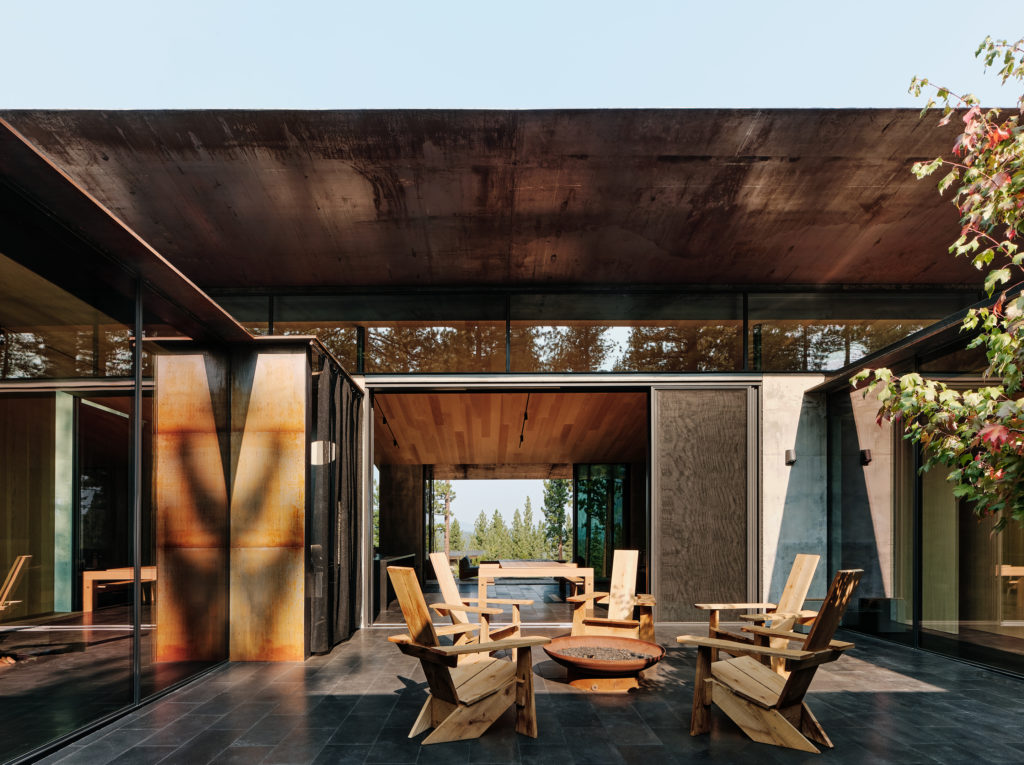
Joe Fletcher
